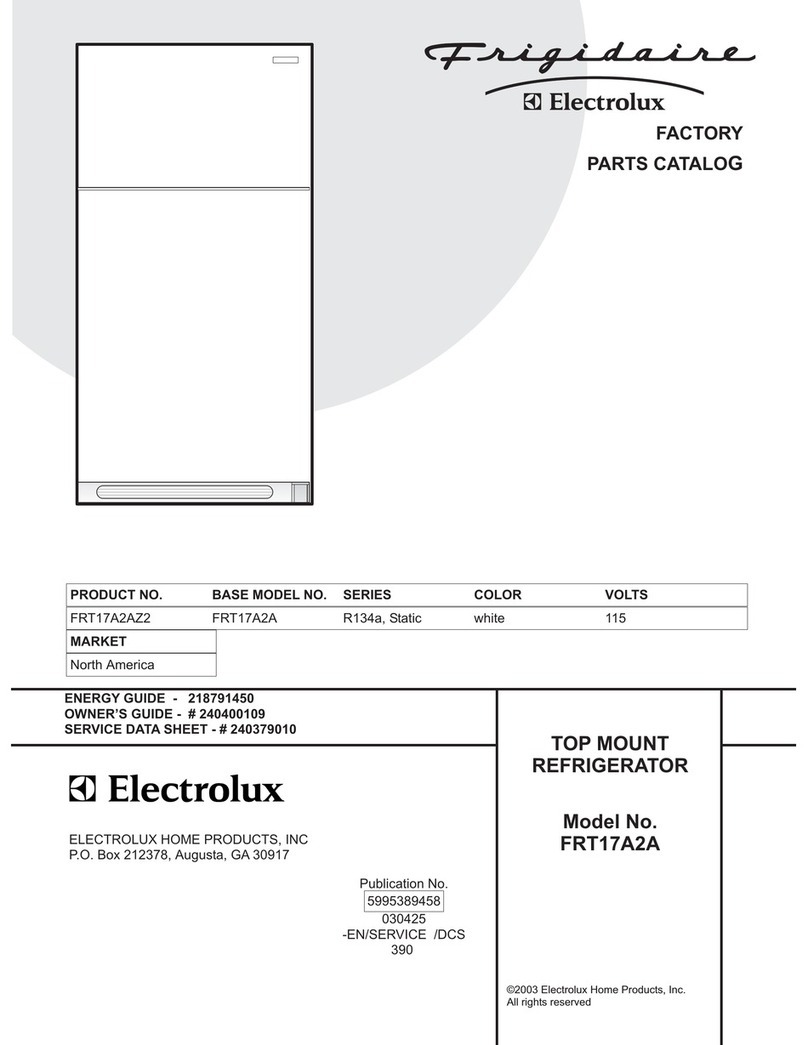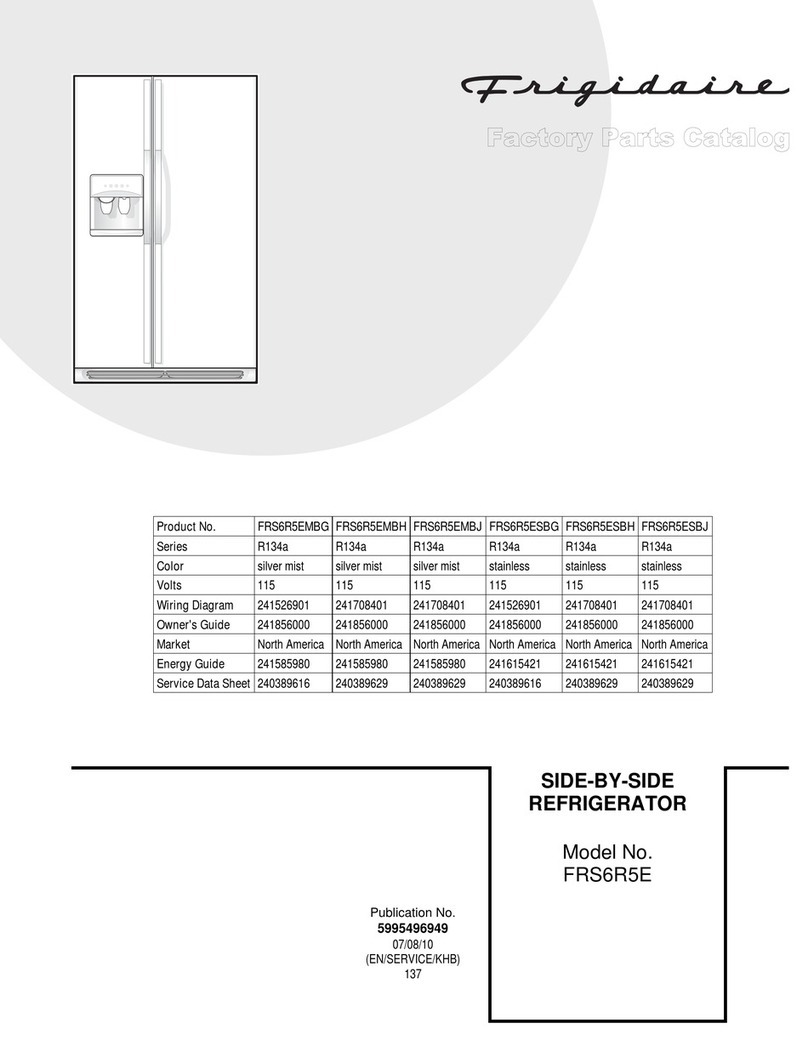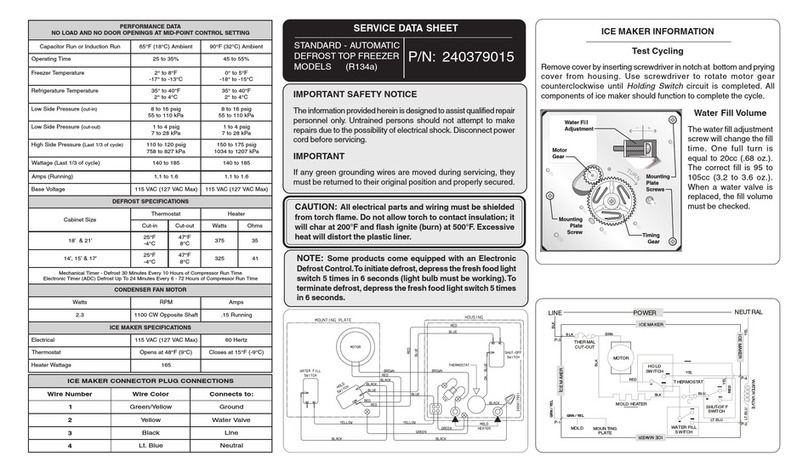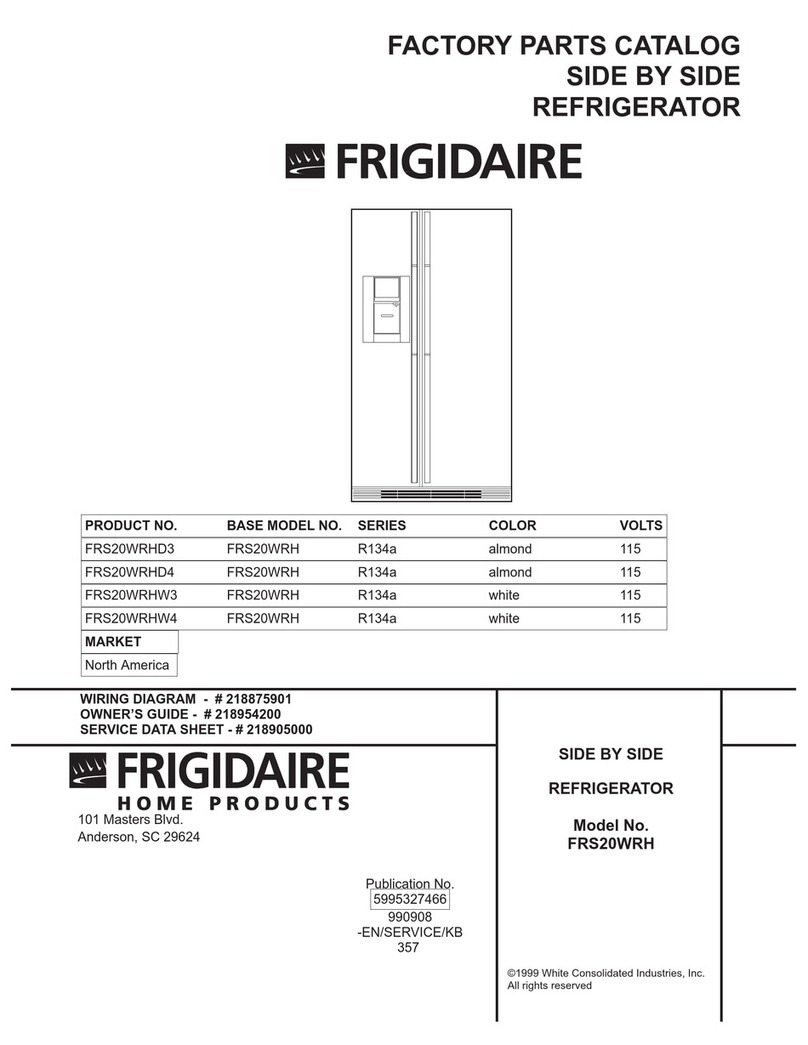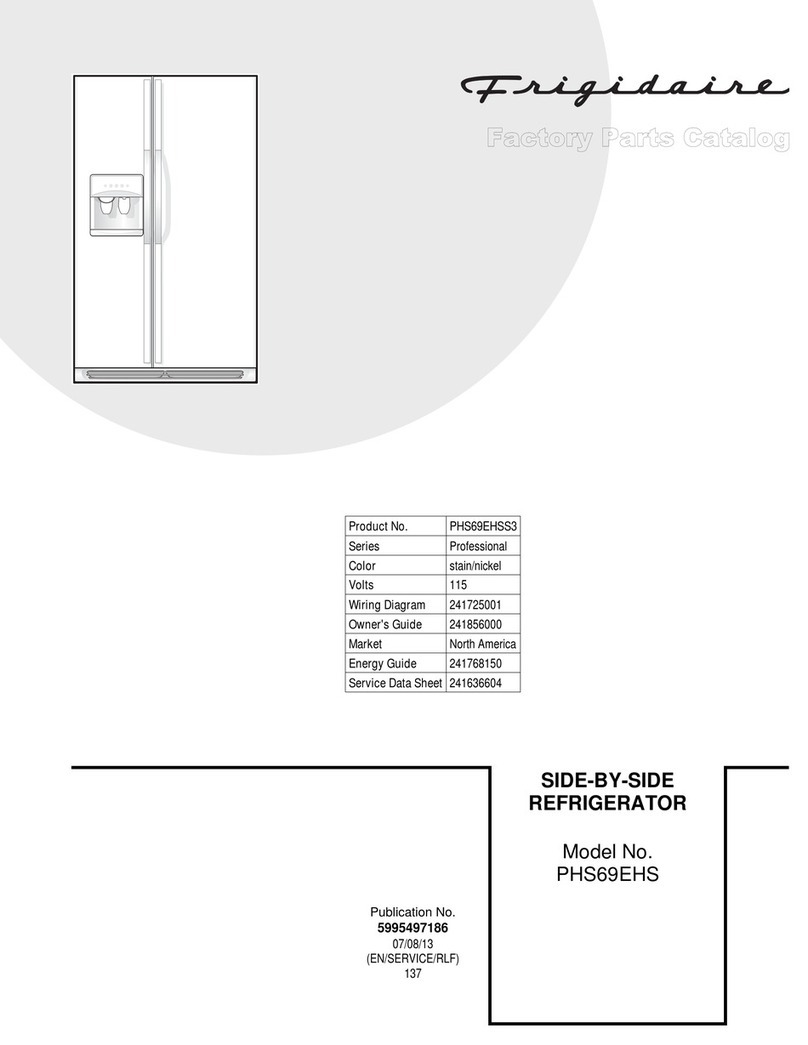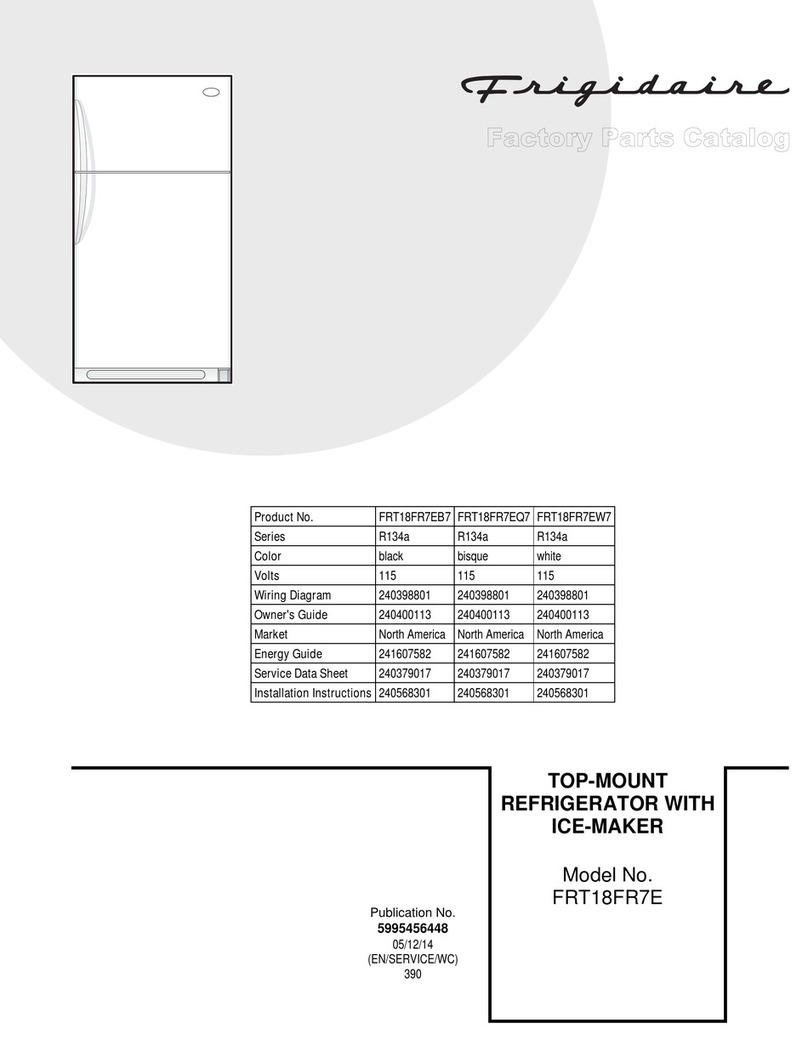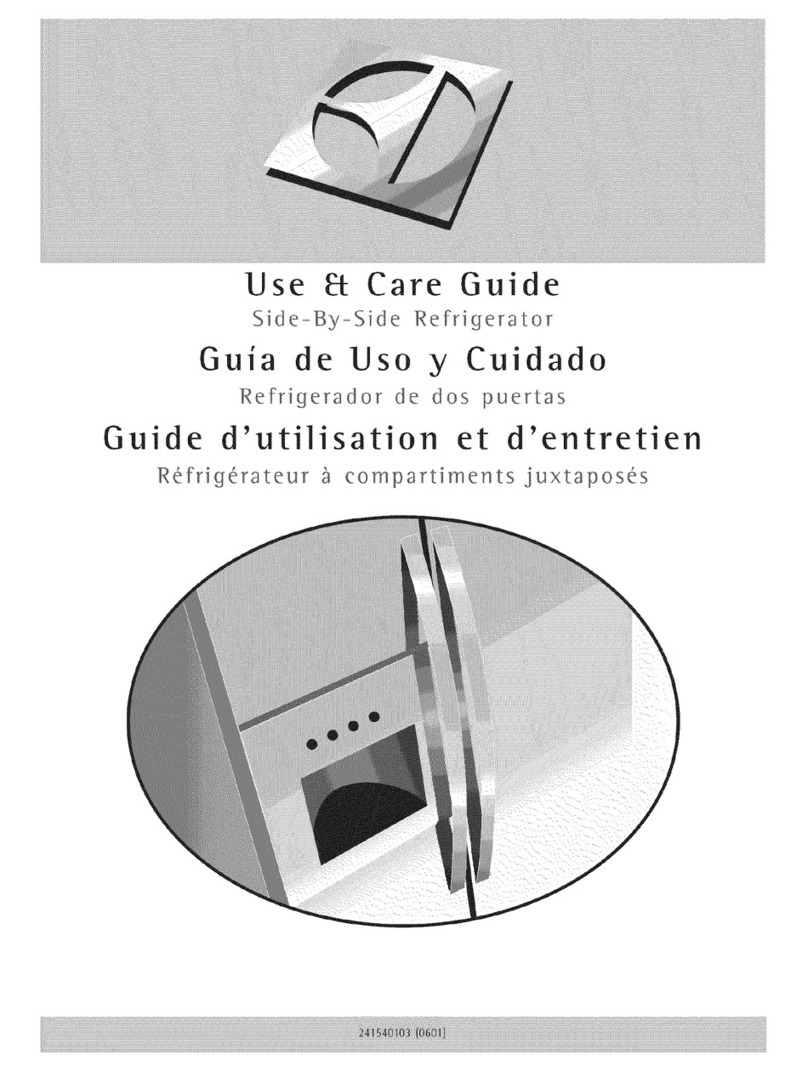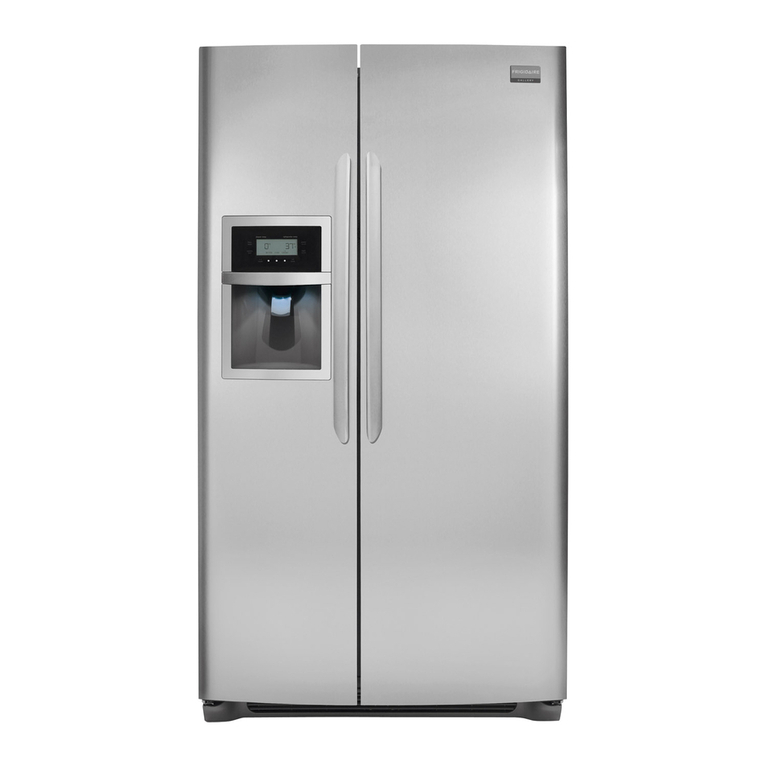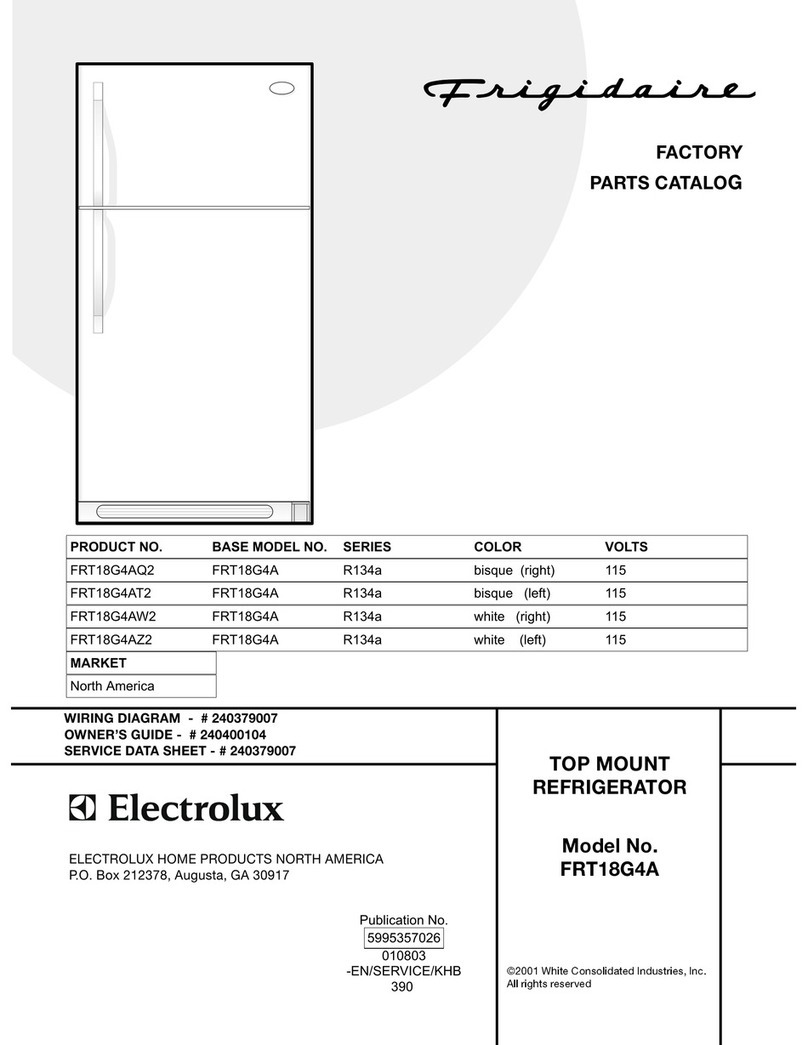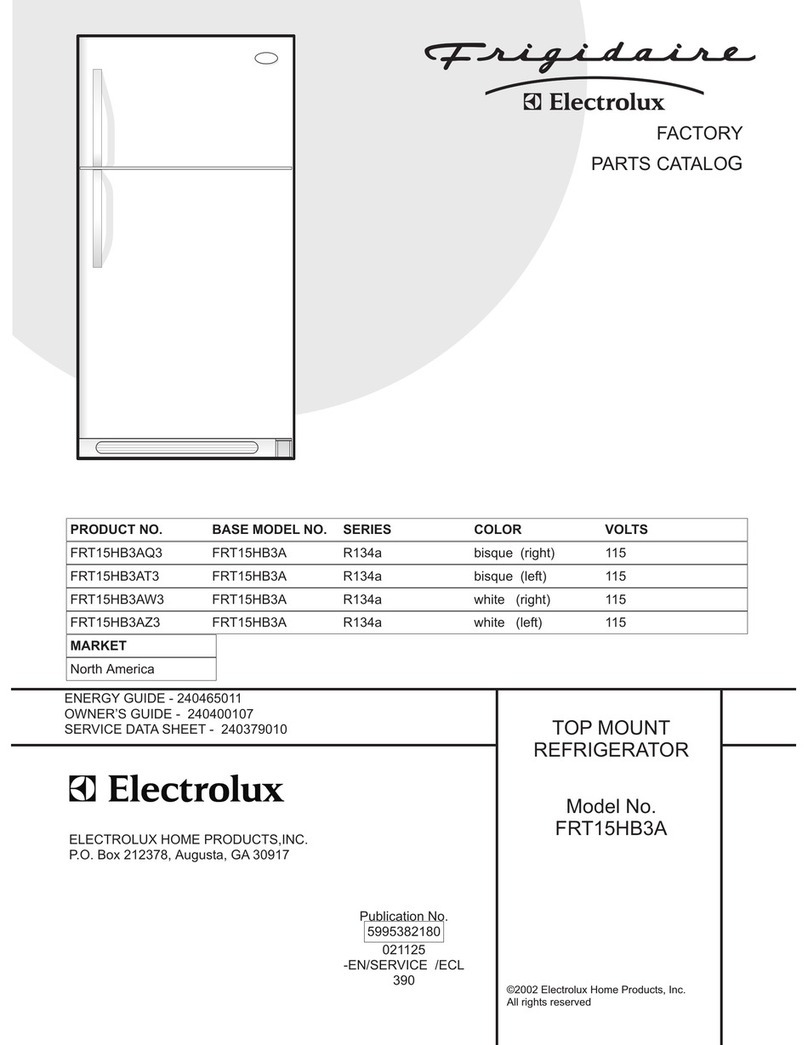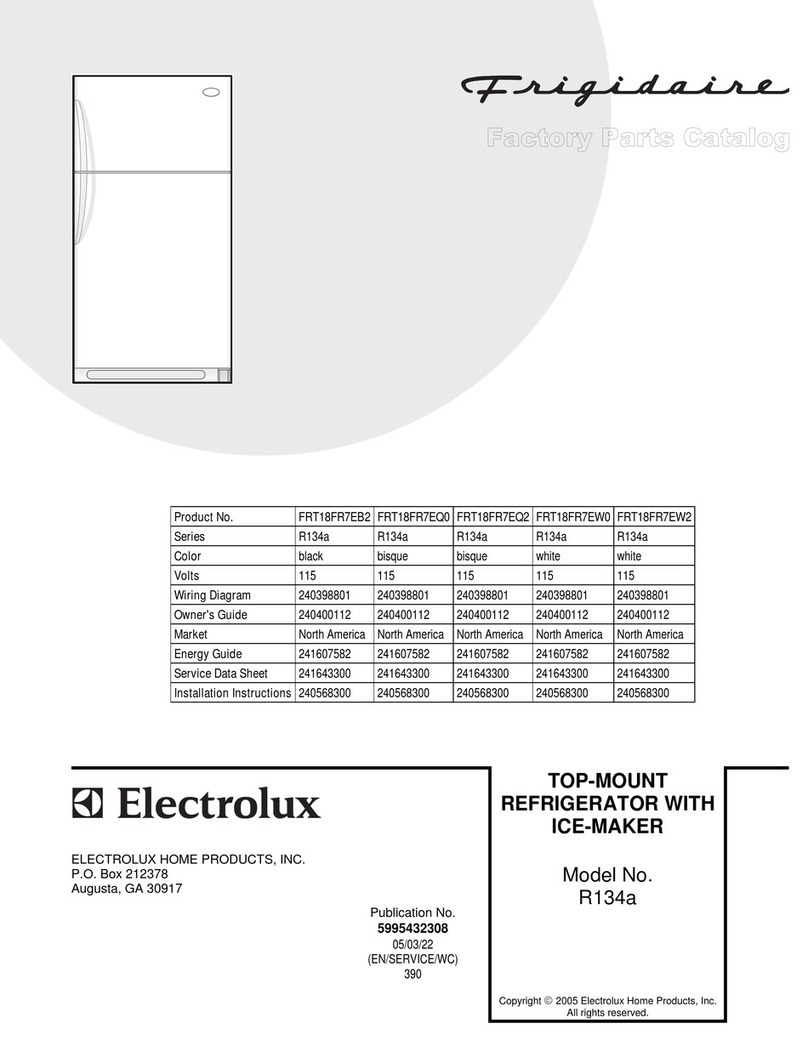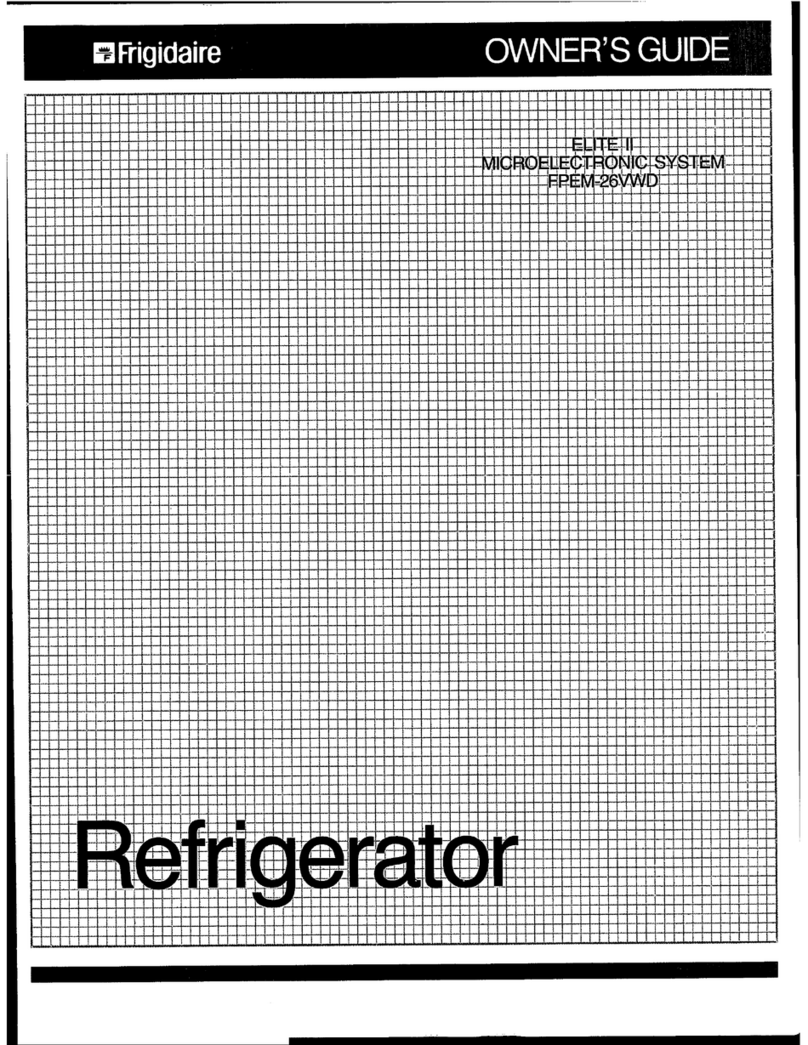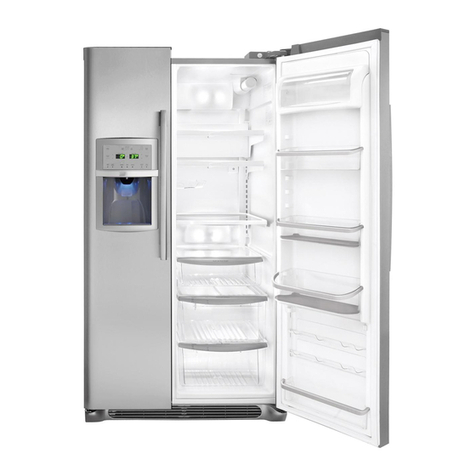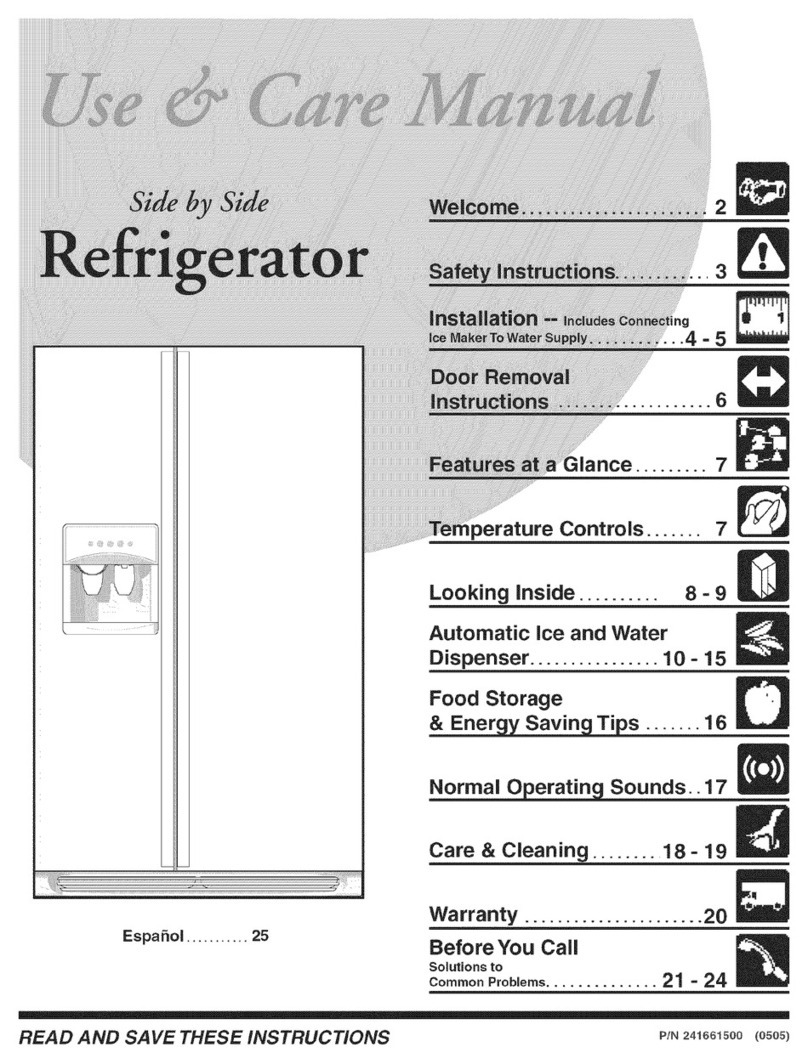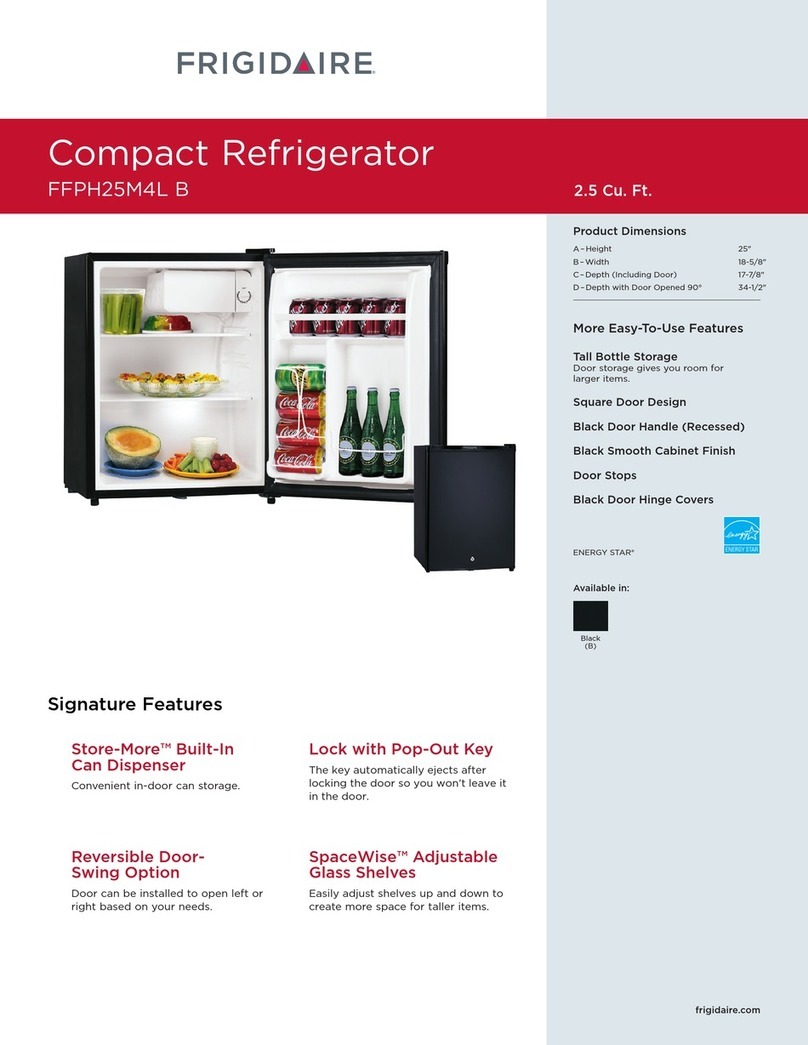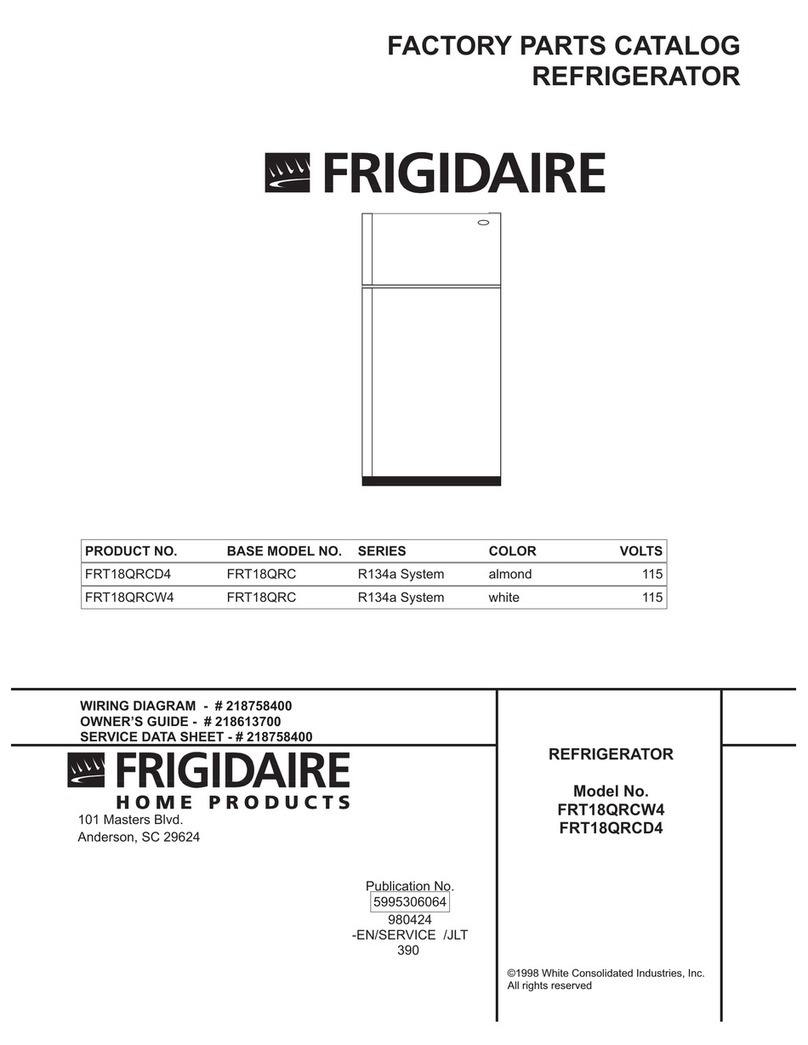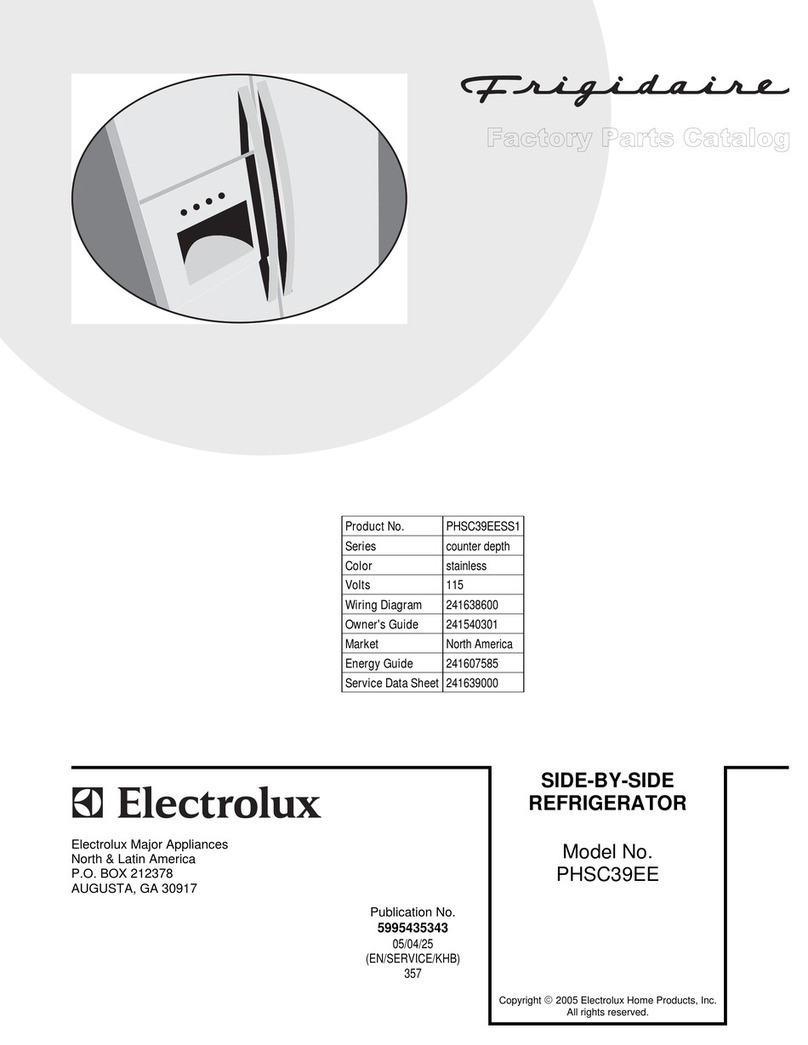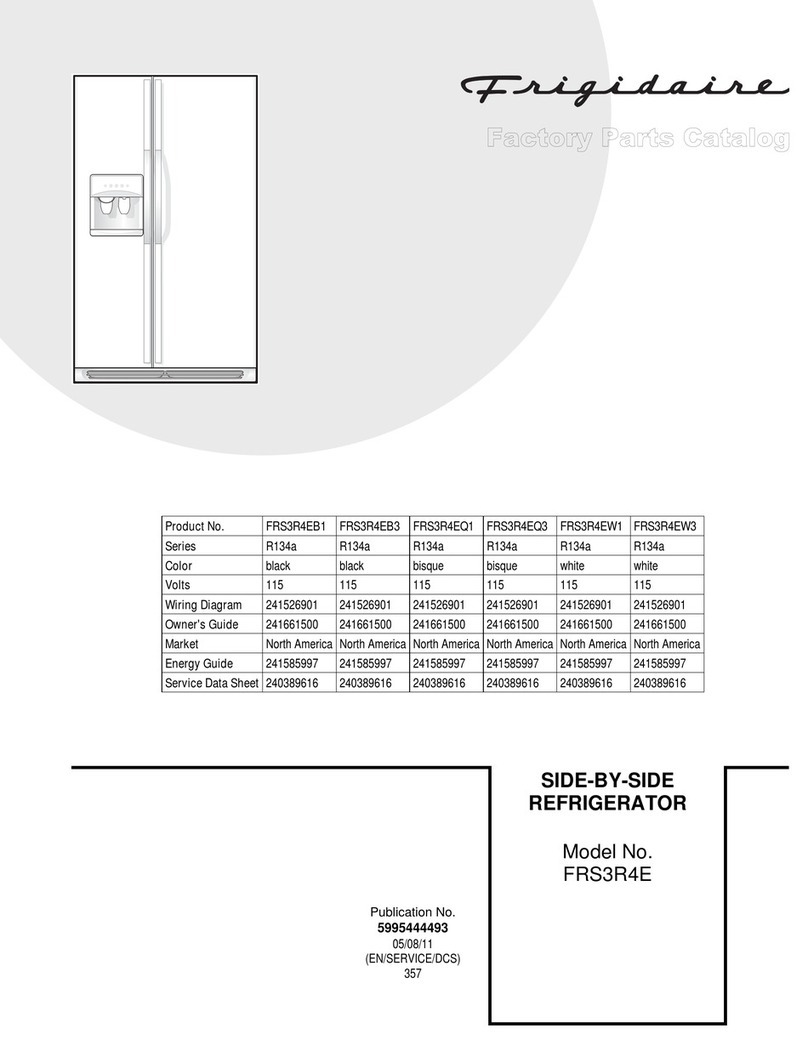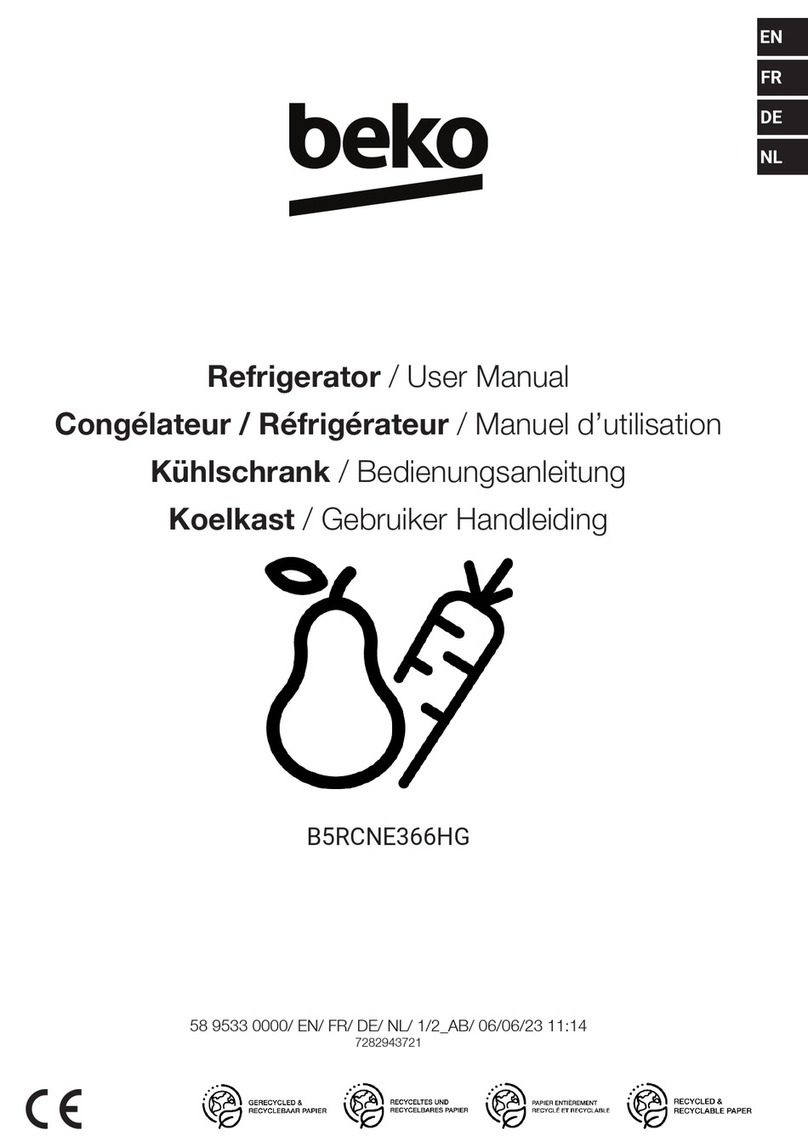
TROUBLESHOOTING Before calling for service, review this Hist.it may save you time and expense. This iist
includes common occurences that are not the resuit of defective workmanship or
materiaB in this appiiance.
PROBLEM CAUSE CORRECTION
REFRIGERATOR OPERATION
Refrigerator does not run.
Refrigerator runs too much or
too long.
Refrigerator is pIugged into a
circuit that has a ground fault
interrupt.
Temperature control is in the
OFF position.
Refrigerator may' not be plugged
in, or plug may be loose.
House fuse blown or tripped
circuit breaker.
Power outage.
Room or outside weather is hot.
®
®
®
®
®
,, Refrigerator has recently been
disconnected for a period of
time.
,, Large amounts of warm or hot
food have been stored recently.
,, Doors are opened too frequently
or too long.
,, Refrigerator door may be slightly
open.
,, Temperature Control is set too
low.
,, Refrigerator gasket is dirty,
worn, cracked, or poorly fitted.
Use another circuit. If you are unsure about the outlet,have
it checked by a certified technician.
See Setting the Temperature Control Section.
Ensure plug is tightly pushed into outlet.
ChecWreplace fuse with a 15 amp time-delay fuse. Reset
circuit breaker.
,, Check house lights. Call local Electric Company.
It's normai for the refrigerator to work harder under these
conditions.
It takes 4 hours for the refrigerator to cool down
completely.
Warm food wil! cause refrigerator to run more until the
desired temperature is reached.
Warm air entering the refrigerator causes it to run more.
Open doors less often.
See "DOOR PROBLEMS" Section,
Turn control knob to a warmer setting. AIIow several hours
for the temperature to stabilize.
CIean or change gasket. Leaks in the door seai will cause
refrigerator to run longer in order to maintain desired
temperature.
Interior refrigerator temperature ,, Temperature Control is set too _ Turn the control to a warmer setting. Allow several hours
is too cold. low. for the temperature to stabilize.
Interior refrigerator temperature
is too warm.
Refrigerator externam surface
temperature is warm.
,, Temperature Control is set too
warm.
o Door is kept open too long or is
opened too frequently.
o Door may not be seating
properly.
Large amounts of warm or hot
food may have been stored
recently.
,, Refrigerator has recently been
disconnected for a period of
time.
The external refrigerator walls
can be as much as 30°F warmer
than room temperature.
Turn control to a colder setting. Allow several hours for the
temperature to stabilize.
Warm air enters the refrigerator every time the door is
opened. Open the door less often.
See "DOOR PROBLEMS" Section.
VVait until the refrigerator has had a chance to reach its
selected temperature.
,, Refrigerator requires 4 hours to cool down completely.
This is normal while the compressor works to transfer
heat from inside the refrigerator cabinet.
SOUND AND NOISE
Louder sound levels whenever
refrigerator is on.
Longer sound mevemswhen
compressor comes on.
,, Modern refrigerators have
increased storage capacity and
more stable temperatures. They
require a high efficiency
compressor.
,, Refrigerator operates at higher
pressures during the start of the
ON cycle.
This is normal. When the surrounding noise leve! is low,
you might hear the compressor running while it cools the
interior.
This is normal. Sound will level off or disappear as
refrigerator continues to run.
